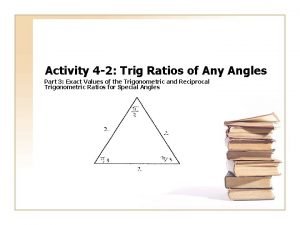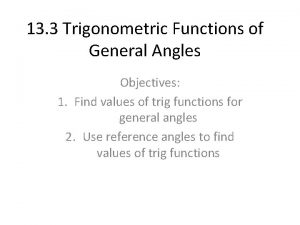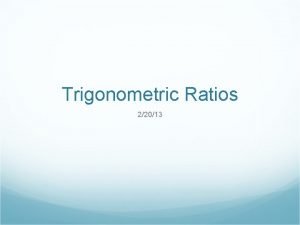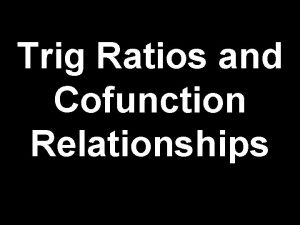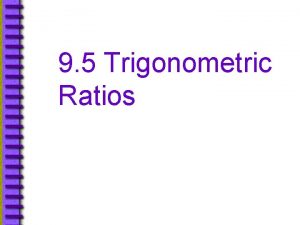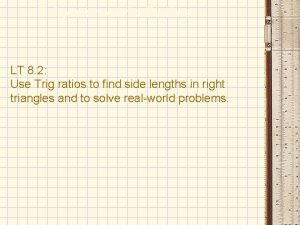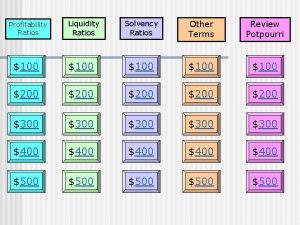6 5 Trig Ratios in Real Life Learning







- Slides: 7

6. 5 Trig Ratios in Real Life Learning Target: I can solve real world problems using trigonometry.

The angle that your line of sight makes with a horizontal surface is called the angle of elevation. 1. You are measuring the height of a tower. You stand 154 feet from the base of the tower. You measure the angle of elevation from a point on the ground to the top of the tower to be 38 degrees. Estimate the height of the tower. DRAW A PICTURE!

2. The angle of elevation from the base to the top of a waterslide is about 13 degrees. The slide extends horizontally about 58. 2 meters. Estimate the height of the slide.

3. Sara places a ladder on level ground against a vertical wall. When the base of the ladder is 5 ft from the wall, the ladder reaches a height of 7 ft along the wall. Sara then moves the base 1 ft closer to the wall. To the nearest tenth of a foot, how high up the wall does the ladder now reach?

4. A 6 ft tall person is standing 7 ft away from a lamppost. The light on the lamppost is 15 ft above the ground. How long, to the nearest tenth of a foot, is the person’s shadow?

5. An engineer must decide whether to build a road that climbs a hill or goes around it. To do so, he must determine the angle of elevation from horizontal ground to the top of the hill. To the nearest degree, determine the angle of elevation of this hill.

6. A child is standing at point P and flying a kite located at point X, height 25 ft above the ground. As the child lets out more string, the kite rises to a point Y, directly above point B. If the angle of elevation changes from 30⁰ to angle 50⁰, how much higher, to the nearest foot, is the kite than it was initially?


